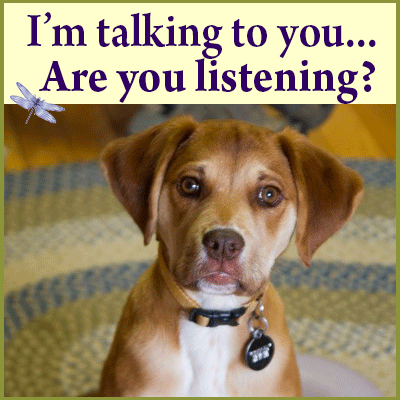About 15 years ago, my ultra-handsome male tawny tabby feline began sitting with his back to me when he had something important to say. Typically, this was during heated discussions I was having with my now ex-husband. Not long after, one of my client’s hound dogs who had been touring my exam room, inhaling all the sweet scents, abruptly sat down with his back to me as his person and I were talking about food. From then on, it was established that most animals that want to communicate with me will assume the ‘back to me’ position. As an animal intuitive, I paid attention.
I have had several dogs (two of them hound dogs) that, instead, stood less than a foot away and barked every time they had a comment to make. Older, lazier or sleepy dogs have adjusted their recumbent position so they would be lying with their backs to me. Two smaller terrier dogs have actually walked into my room, saw where I was sitting, sprinted over and sat on my feet in the ‘back to me’ position.
About two weeks ago, an ancient and proud Rottweiler who could barely totter into my room found himself struggling to stand just to adjust himself into ‘the position.’ The conversation between his person and I had gotten theoretical. We simply had forgotten to ask this amazing dog what his opinion was.
My point is: Your animal friends have points they want to make and opinions they want to express.
Take the time to sit quietly with them and be open to these insights. These conversations may show up as words or sentences in your mind, complete thought patterns, as visual snapshots or movies, or even as sensations in your body.
The ability to listen is like a finely honed muscle. The more you use it, the stronger it becomes.
It is time to listen.
Do you have a story about Dr. Laurel’s dog advice or how she helped your animal companion? Please post your comment on our Facebook page or write a Google Review.


